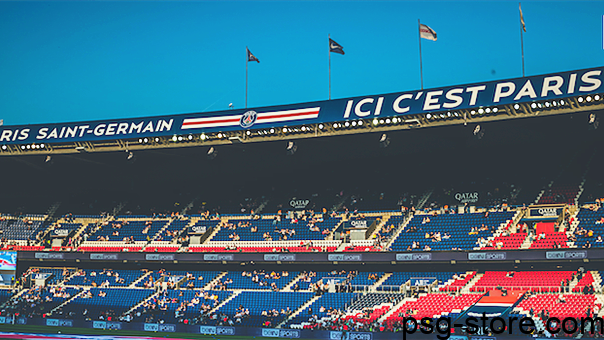It doesn’t take much to think that the colors of Parc des Princes are the club colors – red, blue and white. Such a “museum” dedicated to the Red and Blue Army carries a lot of the club’s history.
From the club’s creation to joining the Ligue 1, from its first European game to its first national title, more than 50 years of Paris Saint-Germain’s history can be seen in this stadium.
▶ Basic Facts
- Location: 24 Rue du Commandant Guilbaud
- Built: 1967 (current)
- Opened: 25 May 1972
- Capacity: 47929
- Cost: 150 million FRF (1972)

▶ HISTORY
Le Parc des Princes, or “The Park of Princes” in English. As we all know, it is the home of Paris Saint-Germain and the fourth-largest football stadium in France.
Le Parc des Princes has been around since 1897, although it has gone through countless different iterations since then. It was originally built as a racing circuit. The first football game was played at the stadium on November 14, 1897. It wasn’t until 1974 that Paris Saint-Germain started playing at Le Parc des Princes.
The stadium was redesigned and rebuilt in 1967 and opened in 1972 with a new design by Roger Taillibert. Besides Paris Saint-Germain games, the stadium has also hosted the World Cup, European Championships and even the European Cup final.
The current mayor of Paris, Anne Hidalgo, believes that if the stadium is optimized, it will definitely benefit the development of Paris and Paris Saint-Germain. Owner Qatar Sports Investments has long intended to increase the stadium’s capacity and aims to bring it closer to 60,000. Those things, though, are ruled out after the 2024 Olympics.

▶ The Design of Le Parc des Princes
Le Parc des Princes is built in a bowl-shaped design, with 17 different entrances on the ground level, all represented by a single letter. Like most stadiums, Le Parc des Princes has its own famous stand.
- Tribune Auteuil – North Stand, named after a nearby metro station. It can be said to be the “historical wall” of the stadium, a multicultural booth. It fits the stadium’s two-tier bowl design and sits behind one of the goals.
- Tribune Paris – Located in the east, maintaining the two-tier system used elsewhere on the ground, this stand is the largest part of the stadium. This side stand is located in front of the Borelli stand and has a beautiful view of the Parc lawn, so you won’t miss a moment of the game.
- Tribune Boulogne – To the south, this is another iconic corner of the Parc, where the stands often sit with the club’s loudest and most passionate fans. Perhaps it is better known as the Kop of Boulogne, a nickname adopted after PSG’s European games against Liverpool and Leeds.
- Presidential Tribune – Located in the west and considered the main grandstand. Named after the club president from 1978 to 1991, this side stand offers the best view of the player’s entrance and their respective benches. But his current name is Borelli.

